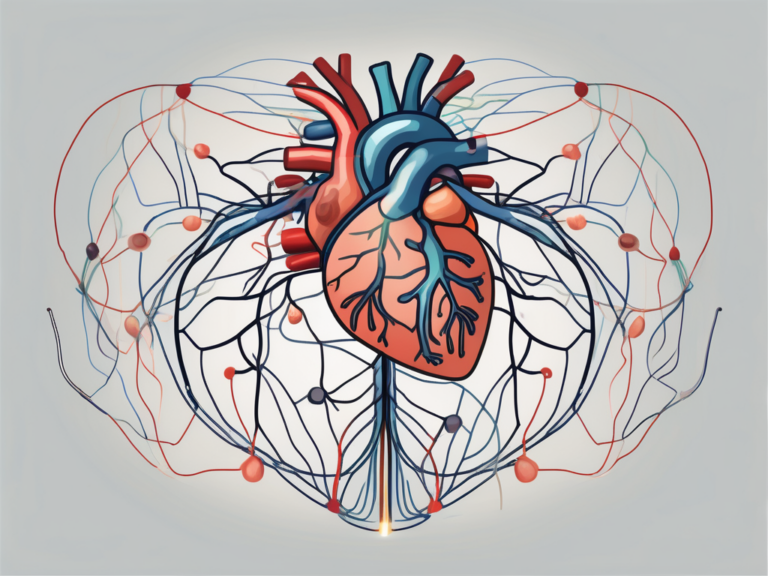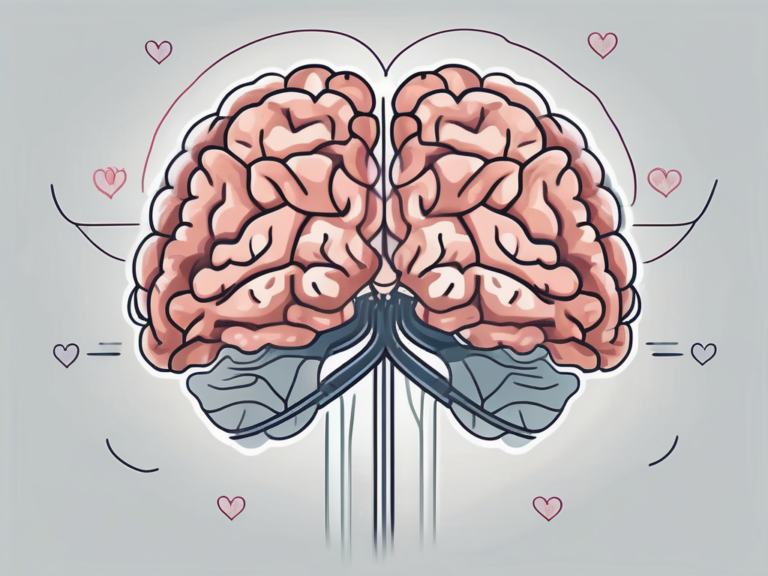Unveiling the Wonders of the Vestibulo Cochlear Nerve
Welcome to the fascinating world of the Vestibulo Cochlear Nerve! In this article, we will dive deep into the intricate workings of this remarkable nerve and explore its role in our hearing, balance, and overall wellbeing. So, put on your scientific cap and get ready to be amazed!
Understanding the Vestibulo Cochlear Nerve
Anatomy and Structure of the Vestibulo Cochlear Nerve
The Vestibulo Cochlear Nerve, also known as the 8th cranial nerve, is a fascinating component of the human nervous system. This complex bundle of nerve fibers serves as a vital link between the inner ear and the brainstem, facilitating the transmission of sensory information crucial for auditory and vestibular functions. Comprising two primary branches, the vestibular nerve and the cochlear nerve, this intricate neural pathway is essential for maintaining equilibrium, spatial orientation, and auditory perception.
Within the inner ear, the vestibular nerve is responsible for relaying signals related to balance and spatial orientation to the brain. This intricate system allows us to navigate our environment with precision and stability, ensuring that we can move confidently and without dizziness. On the other hand, the cochlear nerve carries auditory information from the cochlea to the brain, where sound signals are processed and interpreted, enabling us to perceive and appreciate the rich tapestry of sounds that surround us.
Function of the Vestibulo Cochlear Nerve
Now, let’s delve deeper into the remarkable functions of the Vestibulo Cochlear Nerve. This indispensable neural pathway acts as a conduit for sensory input, playing a pivotal role in our daily experiences. By transmitting signals from the inner ear to the brain, the Vestibulo Cochlear Nerve allows us to not only hear and interpret sounds but also maintain our balance and spatial awareness. Through its intricate network of nerve fibers, this nerve ensures that we can appreciate the symphony of sounds in our environment while navigating the world with grace and stability.
The Role of the Vestibulo Cochlear Nerve in Hearing
Sound Transmission Process
Ever wondered how we hear the beautiful melodies or the soothing whispers around us? It all starts with the Vestibulo Cochlear Nerve! This incredible nerve picks up sound vibrations from the cochlea, a snail-shaped structure in the inner ear, and sends them to the brain for interpretation. This process converts sound waves into electrical signals that our brain can understand, giving us the gift of hearing.
The Vestibulo Cochlear Nerve is a crucial component of the auditory system, working in harmony with the cochlea to capture a wide range of sounds. The cochlea’s hair cells detect different frequencies of sound vibrations, which are then transmitted to the brain via the Vestibulo Cochlear Nerve. This intricate process allows us to perceive the nuances of music, language, and environmental noises with remarkable clarity.
The Vestibulo Cochlear Nerve and Balance
But wait, there’s more! The Vestibulo Cochlear Nerve is not just responsible for our sense of hearing; it also has a vital role in maintaining our balance. By gathering information from the vestibular system, which includes structures like the semicircular canals and otolith organs, this nerve helps us stay upright, walk in a straight line, and avoid embarrassing tumbles.
Furthermore, the Vestibulo Cochlear Nerve plays a key role in coordinating eye movements with head movements to stabilize our vision during motion. This intricate connection between the vestibular system and the nerve ensures that our gaze remains steady even when we turn our heads or change positions rapidly. Without this precise coordination, simple tasks like reading a sign while walking or tracking a moving object would be challenging.
Disorders Associated with the Vestibulo Cochlear Nerve
The Vestibulo Cochlear Nerve, also known as the eighth cranial nerve, plays a crucial role in our auditory and vestibular systems. It is responsible for transmitting sensory information from the inner ear to the brain, helping us maintain balance and interpret sound signals. However, just like any other part of our intricate body, the Vestibulo Cochlear Nerve is susceptible to disorders that can disrupt its normal functioning.
When the Vestibulo Cochlear Nerve is affected by disorders, a range of symptoms may manifest, impacting various aspects of our sensory perception. Hearing loss, one of the most common symptoms, can range from mild to profound and may affect one or both ears. Dizziness and vertigo, characterized by a spinning sensation, can be debilitating and lead to feelings of disorientation. Tinnitus, often described as ringing, buzzing, or hissing in the ears, can be persistent and distressing. Additionally, difficulties with balance and spatial orientation may arise, affecting mobility and coordination.
Symptoms of Vestibulo Cochlear Nerve Disorders
Unfortunately, like any other part of our complex body, the Vestibulo Cochlear Nerve can experience disorders. When this happens, it can lead to various symptoms such as hearing loss, dizziness, vertigo, tinnitus (ringing in the ears), and even difficulties with balance. These symptoms can significantly impact our quality of life, making it crucial to identify and manage any potential issues.
Diagnosis and Treatment Options
If you ever encounter such symptoms, seeking medical advice is essential. A healthcare professional, such as an audiologist or an otolaryngologist, can conduct tests to diagnose any potential Vestibulo Cochlear Nerve disorders. Treatment options may include medication, therapeutic interventions, and rehabilitation techniques to improve hearing and restore balance.
The Impact of Vestibulo Cochlear Nerve Damage
Hearing Loss and Tinnitus
One of the most significant consequences of Vestibulo Cochlear Nerve damage is hearing loss. Whether caused by trauma, infection, or wear and tear over time, damage to this nerve can result in varying degrees of hearing impairment. The Vestibulo Cochlear Nerve, also known as the eighth cranial nerve, plays a crucial role in transmitting sound and balance information from the inner ear to the brain. When this nerve is damaged, it can lead to difficulties in processing sound signals, resulting in partial or complete hearing loss. In addition to hearing loss, tinnitus, the persistent ringing or buzzing sensation in the ears, can also be a bothersome effect of nerve damage. Individuals with tinnitus often report a constant noise that can interfere with their ability to concentrate or sleep.
Balance Disorders and Vertigo
Beyond hearing loss, an impaired Vestibulo Cochlear Nerve can disrupt our sense of balance. Balance disorders, such as dizziness and vertigo, can leave us feeling disoriented, unsteady on our feet, and even trigger episodes of spinning sensation. The Vestibulo Cochlear Nerve is responsible for providing the brain with information about our body’s position and movement in space. Damage to this nerve can result in faulty signals being sent to the brain, leading to balance issues. Individuals with balance disorders may experience symptoms such as lightheadedness, unsteadiness, and a sensation of floating or spinning. These symptoms can significantly impact our daily routine and require attention for proper management. Seeking medical evaluation and treatment from a healthcare professional specializing in vestibular disorders is essential for effectively addressing balance issues associated with Vestibulo Cochlear Nerve damage.
Future Research Directions in Vestibulo Cochlear Nerve Health
Advances in Treatment and Rehabilitation
The field of Vestibulo Cochlear Nerve research is continuously evolving, offering hope for improved treatment and rehabilitation options. Scientists and medical professionals are investing their efforts in developing advanced therapies, medications, and hearing aids that target specific nerve damage and restore function. Exciting times lie ahead!
One promising avenue of research involves the use of innovative technologies such as virtual reality (VR) and artificial intelligence (AI) in the treatment and rehabilitation of Vestibulo Cochlear Nerve disorders. VR simulations can help individuals with balance issues to retrain their brains and improve their spatial orientation, while AI algorithms can personalize treatment plans based on individual patient data, leading to more effective outcomes.
The Potential of Regenerative Medicine
Another area of intrigue lies in the realm of regenerative medicine. Scientists are exploring the potential of regenerating damaged nerve fibers to restore hearing and balance in individuals with Vestibulo Cochlear Nerve disorders. While this technology is still in its infancy, the possibilities it holds are truly awe-inspiring.
Furthermore, recent studies have highlighted the role of nutrition and lifestyle factors in maintaining Vestibulo Cochlear Nerve health. A balanced diet rich in antioxidants, omega-3 fatty acids, and vitamins like B12 and folate has been linked to improved nerve function and reduced risk of disorders. Regular physical activity, mindfulness practices, and adequate sleep have also shown to have positive effects on nerve health.
In conclusion, the Vestibulo Cochlear Nerve is a marvel of our human anatomy, responsible for our ability to hear and maintain balance. Understanding its structure, function, and the potential impact of disorders can help us appreciate and take care of this extraordinary nerve. So, let’s cherish the wonders of the Vestibulo Cochlear Nerve and embrace the delightful symphony it brings into our lives!





